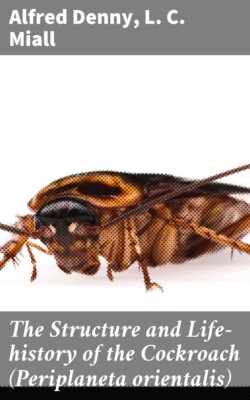Читать книгу The Structure and Life-history of the Cockroach (Periplaneta orientalis) - L. C. Miall - Страница 23
Names in common use.
ОглавлениеA few lines must be added upon the popular and scientific names of this insect. Etymologists have found it hard to explain the common English name, which seems to be related to cock and roach, but has really nothing to do with either. The lexicographers usually hold their peace about it, or give derivations which are absurd. Mr. James M. Miall informs us that “Cockroach can be traced to the Spanish cucarácha, a diminutive form of cuco or coco (Lat. coccum, a berry). Cucarácha is used also of the woodlouse, which, when rolled up, resembles a berry. The termination -ácha (Ital. -accio, -accia) signifies mean or contemptible. The Spanish word has also taken a French form; at least coqueraches has some currency (see, for example, Tylor’s Anahuac, p. 325).” In provincial English Black Clock is a common name. The German word Schabe, often turned into Schwabe, means perhaps Suabian, as Moufet, quoting Cordus, seems to explain.27 Franzose and Däne are other German words for the insect, applied specially to Blatta germanica; and all seem to imply some popular theory as to the native country of the Cockroach.28 This etymology of Schabe is not free from suspicion, particularly as the same term is commonly applied to the clothes-moth. Kakerlac, much used in France and French-speaking colonies, is a Dutch word of unknown signification. P. Americana is usually named Kakerlac or Cancrelat by the French; while orientalis has many names, such as Cafard, Ravet, and Bête noire.29 The name Blatta was applied by the ancients to quite different insects, of which Virgil and Pliny make mention; Periplaneta is a modern generic term, coined by Burmeister.
